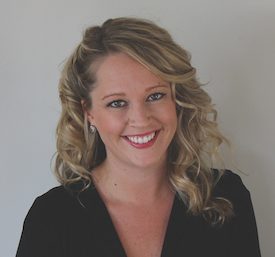Reverse mortgage servicing differs vastly from traditional mortgage servicing, and thanks to program changes issued by the Department of Housing and Urban Development over the last two years, it’s gotten even more challenging.
HousingWire reached out to Celink CEO Jason McNamara – who runs the nation’s largest reverse mortgage subservicer – to talk about the changing landscape of HECM servicing.
McNamara has been active in the reverse space for the past decade. After selling his tech company, he founded Peer Advisors in 2009, an investment group focused on opportunities in the senior housing finance market.
In 2013, Peer Advisors acquired Celink, which now services a portfolio of 300,000 reverse mortgage loans.
McNamara said the challenges facing HECM servicers have pushed a number of companies out of the business, including Bank of America, MetLife, Wells Fargo and Financial Freedom – all of whom sold off their reverse servicing portfolios.
Now, Reverse Mortgage Solutions, a Ditech subsidiary, Nationstar, and Celink are the sole operators in the space.
McNamara told HousingWire that even though the volume of reverse mortgage originations has fallen drastically in the last year, the servicer’s workload has increased. Here’s why, and what he thinks can be done about it:
 Q: Has the changing reverse mortgage landscape presented new challenges for servicers?
Q: Has the changing reverse mortgage landscape presented new challenges for servicers?
A: Yes, it most definitely has and, unfortunately, many servicers have left the business as a result. The policy changes that went into effect [between 2015 and 2018] either simultaneously or consecutively required significant modifications or entirely new servicing processes, as well as programming changes to servicing platforms, reporting and data analysis, training and added controls to ensure compliance while still providing the best customer experience possible to new and existing borrowers.
While the industry has experienced a decline in new loan originations, the servicing workload at Celink has increased immensely over the last few years, especially when it comes to servicing loans once they are called due and payable.
Celink and the industry continue to work with HUD to eliminate manual, paper-intensive processes that create issues for borrowers and increase servicing costs and collateral depreciation that contribute losses to FHA’s MMI Fund.
Some of the changes that HUD made in the final rule provided relief for servicers on certain tasks that did not add value to the borrower or the program, like the requirement to obtain an appraisal once a loan is called due and payable. But the ability to utilize common-sense approaches to minimize future losses for FHA, like cash for keys, provides much-needed relief to borrowers and the MMI Fund.
However, HUD has not yet applied those requirements of the final rule to all loan vintages, just on new loans going forward. We believe that there is value for FHA to apply these new servicing requirements across their entire book of business, so we are encouraging FHA to consider such a policy.
Q: Servicing reverse mortgages comes with unique challenges that traditional mortgage servicers do not often face. What are some of the biggest differences?
A: Servicing reverse mortgages is significantly higher touch than traditional loan servicing. Every month, Celink speaks to borrowers representing about 15-20% of our servicing portfolio, which of course is unheard of with traditional mortgages.
This high-touch loan, combined with a borrower who on average is 82 years old (based on Celink’s servicing portfolio), requires a highly specialized servicing operation and technology platform staffed by experts.
In addition, our servicing operation often involves working with multiple parties, such as family members, heirs, trustees, attorneys, conservators and guardians.
Reverse mortgage servicing requires unique servicing functions not applicable to traditional mortgages. For example, reverse mortgage borrowers often receive monthly payments from their HECM reverse mortgages and/or have the ability to obtain draws from funds available to them.
We are required to process draw requests, including collecting funds from investors, performing fraud detection and borrower verification, updating all loan records and reporting, and delivering funds to [the] borrower in a matter of a few days or pay the borrower a late fee. Because borrowers can submit draw requests at any time, it can increase volumes unexpectedly, and servicers always have to be prepared for that possibility.
Although a reverse mortgage loan is nonrecourse, there are ways that a borrower can default on his or her HECM loan. Once a default occurs, we are restricted to very tight timelines in which to assist borrowers to remain compliant with HUD guidelines.
Q: Does Celink service proprietary reverse mortgages, and if so, is there a marked difference in the way these non-agency loans are handled?
A: Yes, Celink is currently servicing all of the recently released proprietary products, as well as some legacy products. And there are some new products that will be coming to market in 2019 that we will be also be servicing.
From a borrower-experience perspective, most products are serviced very similarly to a HECM, the difference in servicing is largely behind the scenes.
Proprietary product servicing starts with Celink working with our clients in understanding each product’s unique design specifications. Lenders often instruct us to service the loans in a very similar manner to our servicing of HECM loans, but each proprietary product is unique in design, with features such as varying payment, interest rate or termination options.
Celink’s enterprise servicing platform allows us to support all proprietary loan products and our reporting and data warehouse provides our clients and their investment partners with everything they need to manage their servicing book. This year looks like to be a strong year for proprietary loan growth.
Q: It has been a tough time in the HECM space with volume hitting lows the industry hasn’t seen in 14 years. What do you think it will take for the industry to rebound – or will it rebound?
A: The HECM program needs some changes in order to rebound. One big issue is protecting collateral values. A significant contributor to losses in the MMI Fund is losses that occur on loans that have been assigned to HUD and HUD is servicing until end of the loan.
We need to introduce policies that will encourage and make it easier for borrowers to better maintain their homes, as well as options for borrowers to terminate their loans if they cannot do so.
I do not anticipate much HECM origination growth in 2019, but we would experience growth if more retired homeowners realize that these products are useful hedges against cyclical declines in home values. Or, if insurance companies and pension funds would embrace using the product to solve some of their issues, such as longevity and financial risks.
Q: Looking into 2019, what issues or trends do you think will affect reverse mortgage servicing in the year ahead?
A: I think the increasing availability of proprietary products will ultimately help borrowers and the HECM program. The demand and need for retirement products that allow homeowners to use their home equity is increasing. And a HELOC is very risky for retired homeowners.
Right now, the HECM program is trying to serve all needs and types of borrowers, and it was never intended to do that. We need a healthy product mix of private and public home equity solutions for many different scenarios and consumers.
The highlight of 2018 was clearly the return of private capital to our industry. Ultimately, these developments will help the HECM program find its way forward, as well as allow us to help more Americans use their own home equity for retirement, thus reducing the need for additional taxpayer-funded programs.






